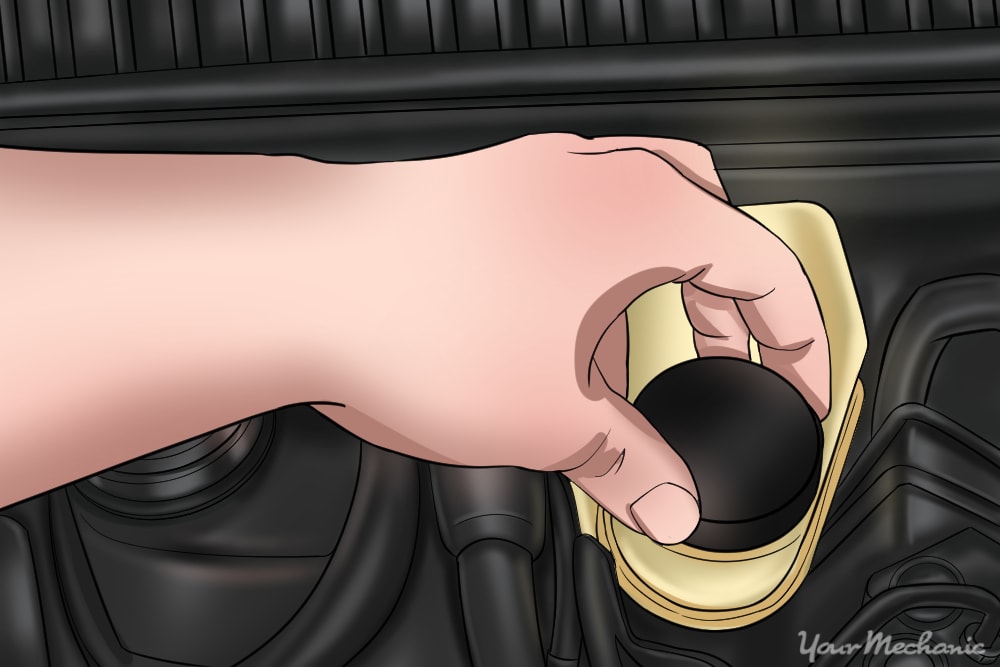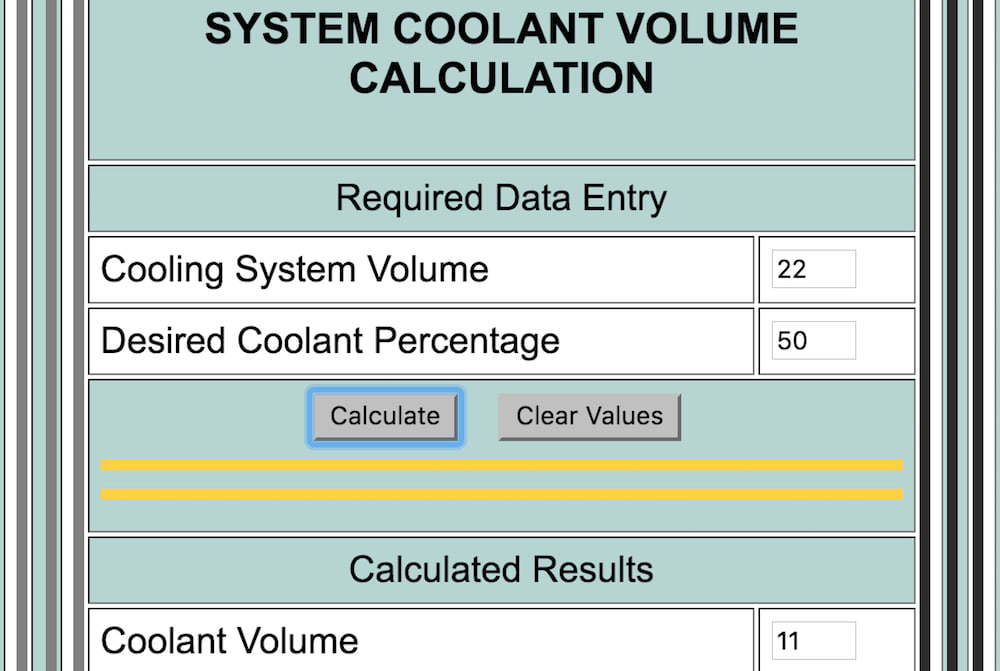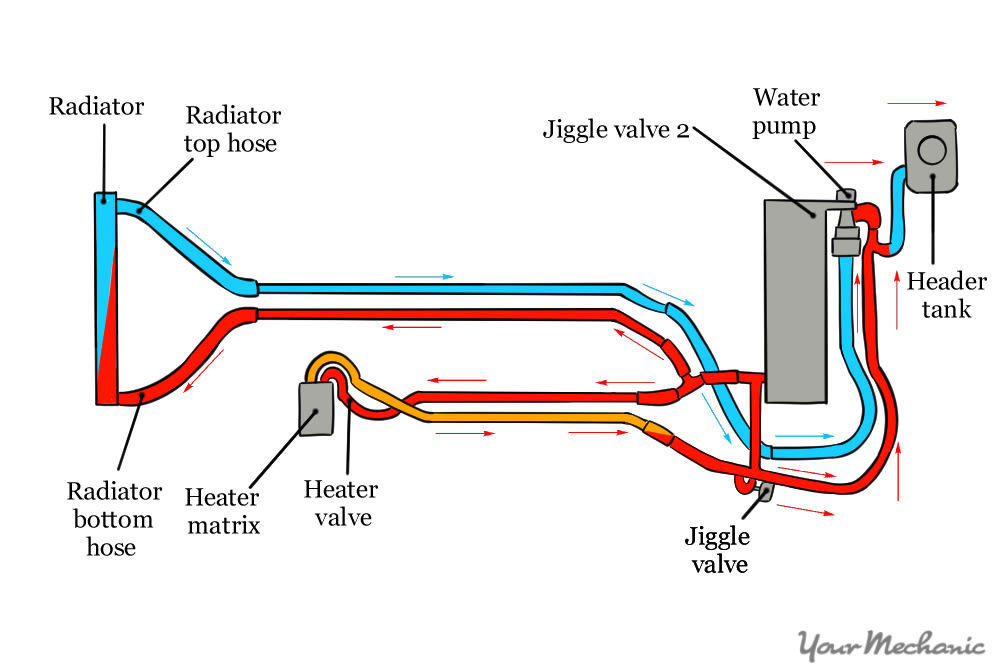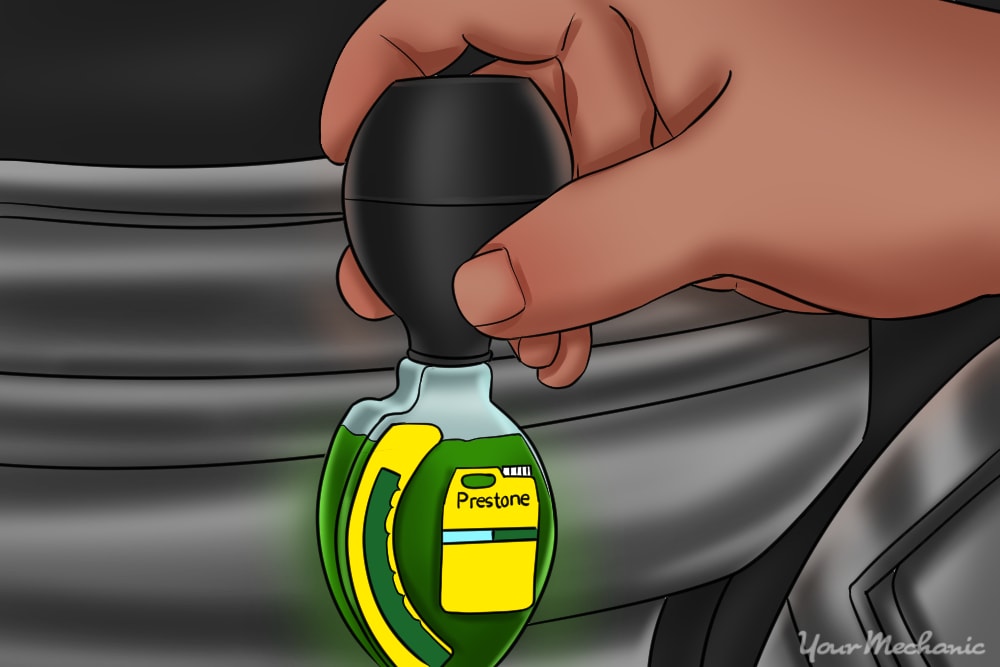

A vehicle's cooling system helps transfer heat away from the engine, allowing the vehicle to function at a normal operating temperature. Without the coolant system, your vehicle would soon overheat and eventually break down as its various parts overheated.
In addition to preventing overheating, coolant must also operate at cold temperatures without freezing. Antifreeze was invented to help in this process, and when mixed with water in the appropriate quantities, it can keep an engine operating properly, even in the coldest winters. Keeping your antifreeze and water levels balanced correctly requires you to calculate how much concentrated coolant you have within your coolant system and then adding antifreeze or water as needed.
Part 1 of 3: How your coolant system works
In order to properly calculate the coolant concentration in your vehicle's coolant system, you need to have a basic understanding of how the whole cooling process works. In addition to requiring the correct ratio of water to antifreeze, the coolant has to cycle through the coolant system in order to properly cool the engine.
Step 1: Understanding antifreeze. The basic principle behind antifreeze is that it lowers the freezing point and raises the boiling point of the water within the radiator.
Antifreeze is made up of a mixture of water and ethylene glycol, or C2H2O2.
Step 2: Understanding the coolant system. In addition to antifreeze and water, the coolant system in a vehicle plays a big part in keeping the engine running at optimum temperature.
The cooling system in a car, specifically the radiator, creates a high-pressure environment that raises the boiling point of the fluid contained within it.
Step 3: Understanding the coolant cycle. The antifreeze and water do not sit there and cool the car engine automatically; the mixture cycles through to help the cooling process.
As the engine reaches a certain temperature, the thermostat, located in a pipe running between the radiator and engine, opens, allowing freshly cooled coolant into the engine. The hot coolant from within the engine is then cycled out at this point.
The coolant absorbs the heat of the surrounding engine before returning to the radiator, where the coolant from the last cycle has dissipated its heat via the radiator's coils and is now cool again. This process continues as long as the engine is running.
Part 2 of 3: Checking the coolant level
Material Needed
To keep your vehicle cool and in optimum running order, you need to check the coolant level and its condition. In addition to adding coolant to the radiator reservoir when it gets low, you must also occasionally flush out the system and add new coolant. This is because over time the antifreeze breaks down and becomes contaminated with debris from within the engine and radiator.
- Warning: Before checking the antifreeze in your vehicle, allow the engine to cool completely to avoid burns. You should also check your antifreeze while it is at room temperature to get the best reading.
Step 1: Suck in the coolant. First, suck the coolant into the antifreeze hydrometer from the opening at the radiator header tank.
This is also called an overflow or expansion tank, and is the point at which you add water or antifreeze to the system.
You can also draw coolant directly from the radiator opening by removing the cap. Make sure that the vehicle has cooled sufficiently before doing so. Fill the hydrometer by squeezing the rubber bulb on one end while the other is inserted into the coolant. Make sure to fill the hydrometer completely.
- Tip: Make sure to use an antifreeze hydrometer and not one designed for use with checking the acid content of the fluid in your vehicle's battery. While hydrometers come in a wide variety of styles, the most common have little floating balls within it of varying colors or arrows that point to temperatures on a scale printed directly on the hydrometer that help determine the strength of the coolant solution.
Step 2: Read the hydrometer. To read the hydrometer, check out the number and color of floating balls, or where the arrows point on the freeze point scale printed on the hydrometer.
Whichever hydrometer type you use, the purpose is to show you the temperature range at which the coolant should work in your vehicle. The hydrometer should indicate a range of 34 degrees Fahrenheit or below to 265 degrees Fahrenheit or higher. Anything that falls in between this means that the coolant system needs flushing.
Part 3 of 3: Calculating the proper water to antifreeze ratio
Once you have determined the protection level of your vehicle, it is time to determine how much antifreeze or water you need to add. Vehicles, such as cars and light trucks, require an antifreeze to water ratio of 50/50. This gives the coolant an adequate amount of freezing and boiling protection while also providing the corrosion protection the engine and radiator need.
In order to properly determine the percentage of antifreeze to water in your radiator, complete the following steps.
Step 1: Find the coolant capacity of your vehicle. This usually ranges anywhere between 8 to 18 liters.
Your vehicle's owner's manual should contain this information.
Step 2: Note the hydrometer reading. You also need the reading from the hydrometer on the concentration level of antifreeze to water currently in your car.
A reading from 33 to 50 percent is normal. Anything more or less means you need to add either antifreeze or water to bring the concentration within a normal range.
Step 3: Multiply the coolant capacity times the percentage of antifreeze within the cooling system. For example, if your vehicle's antifreeze levels are at 25 percent and the vehicle holds 12 liters of coolant, then you would multiply 0.25 x 12 to get an amount of 3 liters of concentrated coolant within the system.
Step 4: Figure out how much to add. To find out how much you need to add, multiply the amount of coolant your vehicle can hold by the percentage of concentrated coolant you want to achieve.
For example, if you want the coolant system to contain 50 percent of concentrated coolant, then you would multiply 0.50 x 12 to get an amount of 6 liters.
Step 5: Determine the amount to be added. Next subtract the amount of concentrated coolant currently within your coolant system from the amount you want.
Using the above examples, you would subtract 3 liters from 6 liters to get the amount of 3 liters, which is what you want to add to the coolant currently in the vehicle to bring the percentage up to 50.
If the concentrated coolant volume is too high, substitute water instead of coolant to add to the system to bring it into line.
So, instead of adding 3 liters of antifreeze to a concentration of 75/25 antifreeze to water concentration, you would add 3 liters of water to reduce the concentrated coolant amount.

To make it simpler, you can use an online calculator, such as one found at csgnetwork.com to calculate the amount of concentrated coolant or water you need to add to bring your coolant within range.
Tip: Another factor when determining if you need to change your coolant as opposed to adding antifreeze or water is coolant condition. While you have the coolant in the hydrometer, check it for color and the presence of debris. If the coolant is clear or has particles floating around in it, it probably needs changing. For the most part, you should only have to change your coolant every two to three years.
Warning: Antifreeze is poisonous to humans and animals. Always make sure to dispose of antifreeze, or flushed coolant, in the appropriate manner.
Making sure your vehicle has the proper concentration of antifreeze to water in its coolant system is important to keep your vehicle running properly and to protect the engine and radiator from corrosion. If you need help with filling your coolant and determining its condition, call one of our expert mechanics to top off your coolant and help you determine your best course of action.





